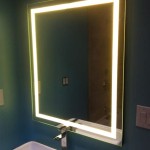How to Mirror Your iPhone to a Mac Mini
Mirroring an iPhone's display to a Mac Mini can be useful for various purposes, from presenting content on a larger screen to troubleshooting device issues. Several methods facilitate this screen mirroring, each with its own advantages and limitations.
Using AirPlay with a Compatible Mac Mini
AirPlay is Apple's proprietary technology for wirelessly streaming content between devices. If the Mac Mini and iPhone are compatible and on the same Wi-Fi network, AirPlay provides a seamless mirroring experience.
To mirror using AirPlay, open Control Center on the iPhone. Tap the "Screen Mirroring" button. Select the Mac Mini's name from the list of available devices. The iPhone's display will then be mirrored on the Mac Mini's screen. To stop mirroring, open Control Center on the iPhone, tap "Screen Mirroring," and then choose "Stop Mirroring."
Compatibility is crucial for AirPlay mirroring. Ensure both the iPhone and Mac Mini are running compatible operating systems. Older Mac Minis may not support AirPlay mirroring.
Mirroring with QuickTime Player
QuickTime Player, a pre-installed application on macOS, offers a wired mirroring solution. This method requires a USB cable connecting the iPhone to the Mac Mini.
Connect the iPhone to the Mac Mini using a USB cable. Open QuickTime Player. From the menu bar, select "File," then "New Movie Recording." A recording window will appear. Click the dropdown arrow next to the record button. Select the iPhone as the camera and microphone input. The iPhone's screen will then be displayed in the QuickTime Player window.
While QuickTime Player offers a wired solution, it's important to note that this method mirrors the screen but doesn't transmit audio by default. Adjusting audio settings within QuickTime Player might be necessary for specific use cases.
Utilizing Third-Party Applications for Mirroring
Several third-party applications are available that offer screen mirroring functionality between iOS devices and Macs. These applications often provide additional features, such as recording the mirrored screen or adjusting the mirroring quality.
Researching and selecting a reputable third-party application is essential. Consider factors such as user reviews, features, and cost when making a selection. Installing and using these applications typically involves downloading the software on both the iPhone and Mac Mini and following the application's specific instructions.
While third-party apps can provide enhanced features, it's important to be aware of potential compatibility issues and ensure the chosen application aligns with specific needs and system requirements.
Troubleshooting Common Mirroring Issues
Occasionally, users may encounter issues when attempting to mirror their iPhone to a Mac Mini. Several troubleshooting steps can help resolve these common problems.
First, ensure both devices are connected to the same Wi-Fi network. Network connectivity issues can often disrupt AirPlay mirroring. Restarting both the iPhone and Mac Mini can also resolve temporary software glitches. Verify that both devices have the latest software updates installed. Software updates frequently address compatibility and performance issues. If using a wired connection, ensure the USB cable is functioning correctly and securely connected to both devices.
For AirPlay-specific issues, confirm AirPlay is enabled on the Mac Mini. Check the Mac Mini's display settings to ensure mirroring is configured correctly. Consulting online resources or Apple support documentation can provide further assistance with specific troubleshooting scenarios.
Choosing the Best Mirroring Method
The optimal mirroring method depends on individual needs and circumstances. AirPlay offers a convenient wireless solution for compatible devices. QuickTime Player provides a reliable wired option, especially useful for situations where a stable connection is paramount. Third-party applications offer additional features and may be suitable for specialized use cases.
Consider factors such as network availability, the need for audio mirroring, and desired additional features when choosing a method. Evaluating the advantages and disadvantages of each option can help users select the most effective mirroring strategy for their specific requirements.
Optimizing Mirroring Performance
Regardless of the chosen method, several steps can help optimize mirroring performance. Closing unnecessary applications on both the iPhone and Mac Mini can free up system resources and improve responsiveness. Reducing the distance between the devices, especially when using AirPlay, can minimize latency and improve the overall mirroring experience.
Adjusting the display settings on the Mac Mini, such as resolution and scaling, can optimize the mirrored image for the larger screen. For demanding tasks like gaming or video editing, a wired connection via QuickTime Player might be preferable to minimize lag and ensure a smooth experience.

How To Mirror Iphone Display Macbook Ios 12 Macos Mojave

2024 Updated How To Mirror Iphone Mac With 5 Methods

2024 How To Mirror Iphone Display Mac Ios 14 And Big Sur

How To Use Computer As Viewfinder For Iphone Wireless Screen Mirror Mac

How To Mirror Iphone Windows Pc Laptop Mac Full Guide

2024 Updated How To Mirror Iphone Mac With 5 Methods

Newest How To Mirror Iphone Mac Macbook Airdroid

How To Airplay From Iphone Or Ipad Mac 9to5mac

How To Mirror Iphone Mac 2024

Stream Audio And From Your Mac With Airplay Apple Support








